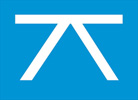|
The Not So Minor Aspects
Most astrologers, when doing transits, progressions, or interpretations, neglect or skim over the so-called "minor" aspects(semi-sextle and quincunx) in astrology,
preferring to concentrate only on the "hard" or major aspects(conjunction, opposition, square, and trine or sextile).
This is understandable, given that there can be so many aspects in a chart, but it is also a fatal mistake. The "minor" aspects are actually just as important as the
"major" ones even though they may not appear to be be as interesting or exciting. The other mistake often made by astrologers is to lump the dual meanings of each aspect
into one. There are TWO kinds of semi-sextile, inconjunct, or any other aspect(except the conjunction and opposition). Rather than seven, there are actually TWELVE astrological
aspects.
Aspects derive their basic natures from the zodiac signs and ther relation to one another, and there are twelve such relations for every sign. The conjunction(0°) is the relationship
of one sign to itself(such as Aries to Aries). The opposition(180°) is the relationship of of one sign to its opposite on the zodiacal wheel(such as Aries to Libra). The square(90°)
is the relationship of one sign to those three signs away from it on either side of the wheel(such as Aries to Cancer, or Aries to Capricorn). The conjunction, opposition, and square
aspects are considered major or critical because of their basic configurations and cardinal natures and can be grouped together as the primary or cardinal aspects.
The trine(120°) is the relationship of one sign to those four signs away from it on the wheel(such as Aries to Leo, or Aries to Sagittarius), and the sextile(60°) is the relationship
of one sign to those two signs away on the wheel(such as Aries to Gemini, or Aries to Aquarius). Both the trine and sextile are considered as non-critical or secondary aspects because
of their generally easy or free-flowing natures. This however, does not make them any less important than the first group. It would be like saying that the signs of Gemini and Aquarius
(representing the sextile) and Leo and Sagttarius(representing the trine) are less important than Aries and Libra(representing the conjunction and opposition respectively) or Cancer and
Capricorn(representing the square). In astrology no one sign is any more important than another and therefore neither should any of the aspects be either.
We come finally to the "minor" aspects. The semi-sextile(30°) is the relation of one sign to those directly neighbouring it on both sides of the wheel(such as Aries Taurus, or Aries to Pisces).
The quincunx or inconjunct(150°)(couldn't they think better names?!) is the relation of one sign to those fives signs away on either side of the wheel(such as Aries to Virgo, or Aries to
Scorpio). Both the semi-sextile and the inconjunct are considered minor or lesser aspects because of their unrelatedness and generally negative natures, yet they are as important as the trine
or sextile and can be grouped along with them as secondary aspects.
ALL OTHER ASPECTS ARE PURELY MATHEMATICAL AND NON-ASTROLOGICAL AS THEY ARE NOT BASED ON SIGN RELATION. This includes the semi-square, semi-quiquadrate, quintile, and all the other abominable
inventions which only serve to clutter and confuse the art and science of astrology. The emphasis on degrees rather than signs is what has led many astrologers astray on this matter. Sign
relationship is first and foremost. Degrees serve to measure the intensity or immediacy of an aspect.
The semi-sextile(half of the sextle) aspect in general signifies either gain(Taurus/2nd house) or loss(Pisces/twelfth house). Both are imbalances(one man's gain is another man's loss) and therefore
negative in nature. Aries, for example, gains through, and at the cost or sacrifice of, Taurus who is ahead on the wheel. Aries on the other hand loses or sacrifices through Pisces who is behind on the
wheel and who in turn gains or benefits from the association. Often the gain or loss is financial or emotional in nature.
The point is there are TWO kinds of semi-sextiles; the lower, dexter, or 2nd house semi-sextile indicating gain, and the higher, sinister, or 12th house semi-sextile indicating loss, just as there are
two different signs or elements on either side of Aries. You cannot lump the two together just as you cannot say that Pisces is Taurus or Taurus is Pisces. They have a basic similarity(both are feminine)
but vastly different natures(one is fixed earth and the other is mutable water). Also, you cannot minimize the importance of the semi-sextile aspect, which would be tantamount to minimizing the importance
of either Taurus or Pisces in relation to the other signs. All aspects are equal in importance just as all the signs are.
The quincunx or inconjunct is of the nature of both Virgo(lower/dexter/6th house), and Scorpio(higher/sinister/8th house) being generally stressful or tense, and having to do with work, health, desire, debt
and everything else associated with these two signs. There are therefore TWO distinct kinds of quincunx aspects just like in the case of the semi-sextile, and to diminish the importance of this aspect is to
diminish the importance of the two signs associated with it.
In summary, The so-called "minor" aspects, are no less important the "major" ones and should be used equally in astrology. Also there are two kinds of most aspects which should be distinguished or
differentiated. For more on the aspects see here.
|

